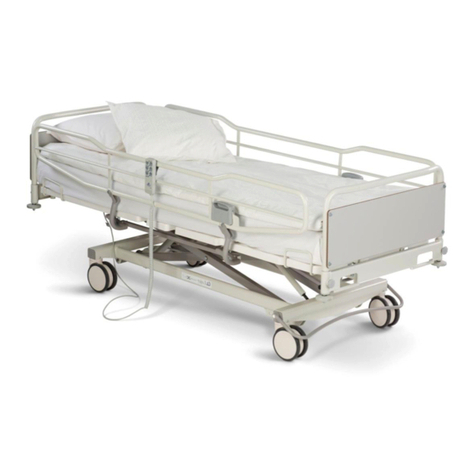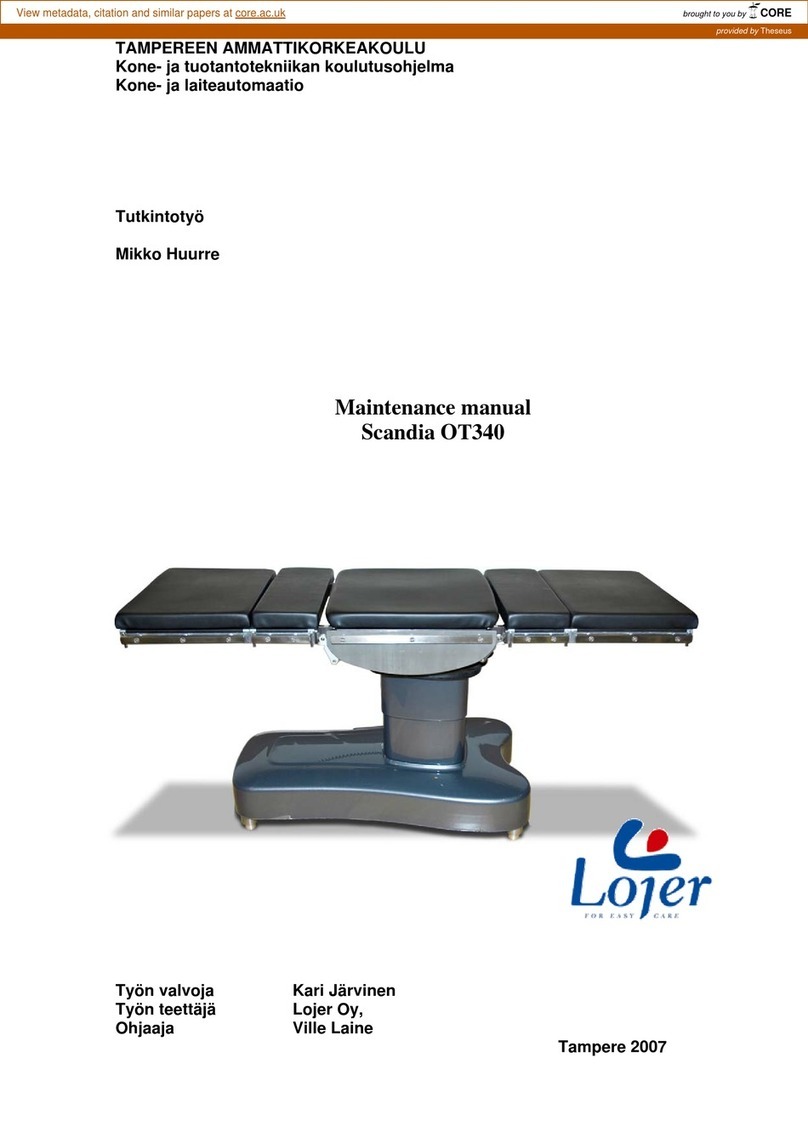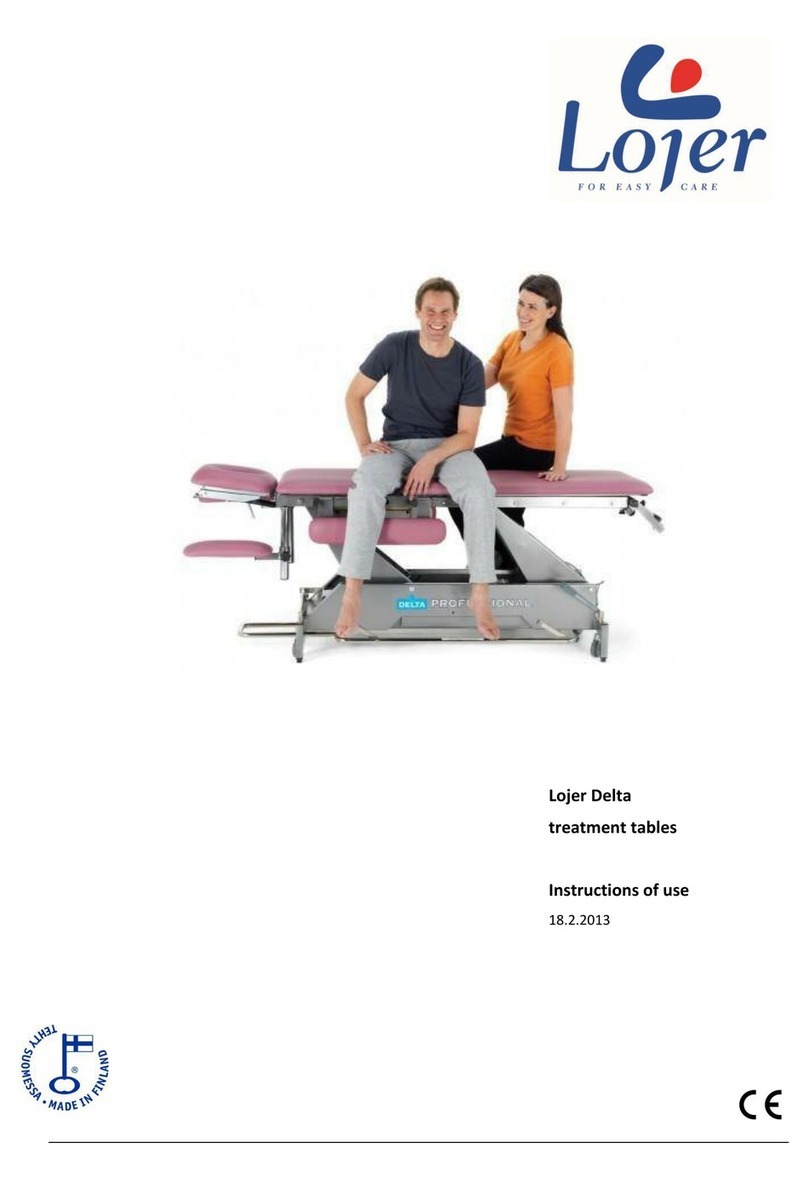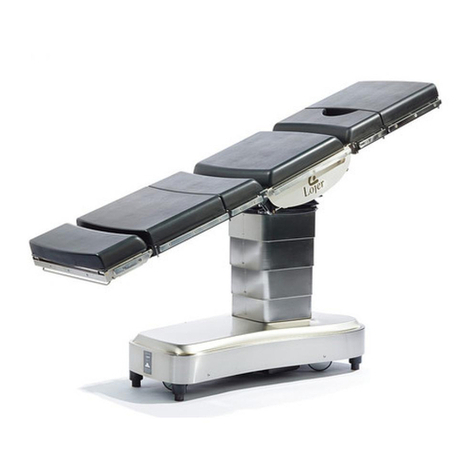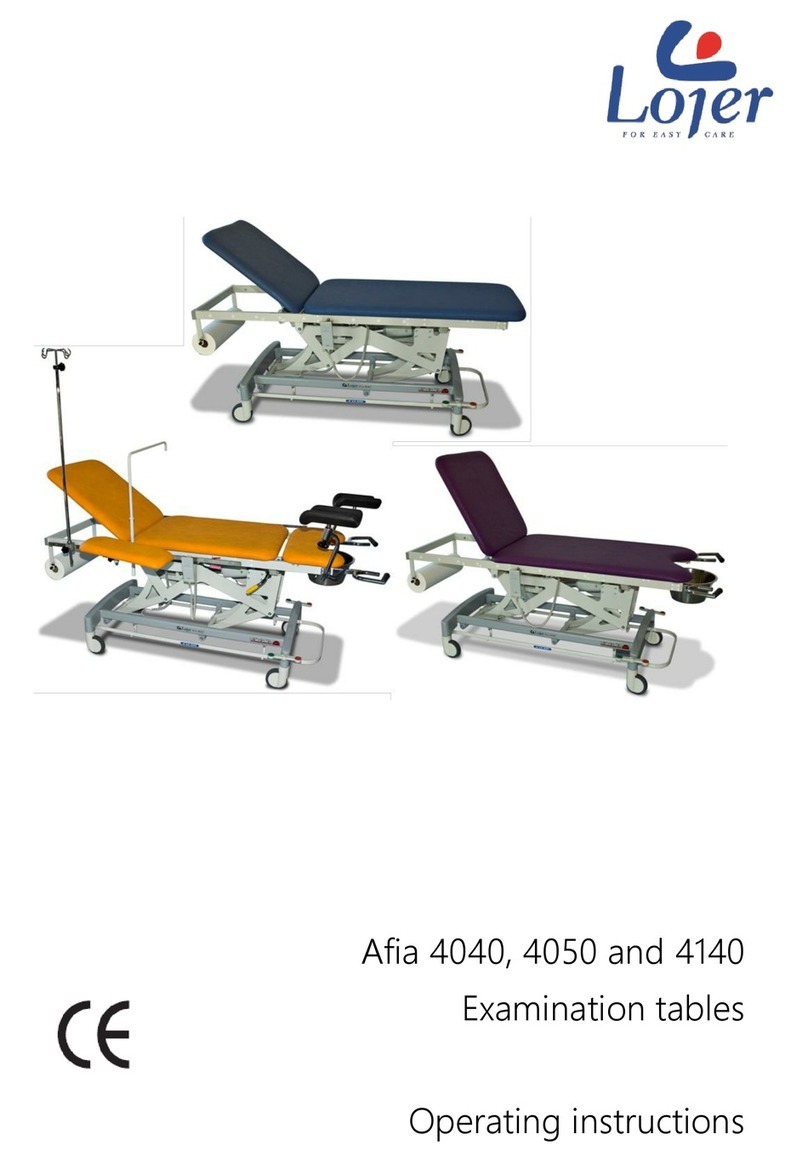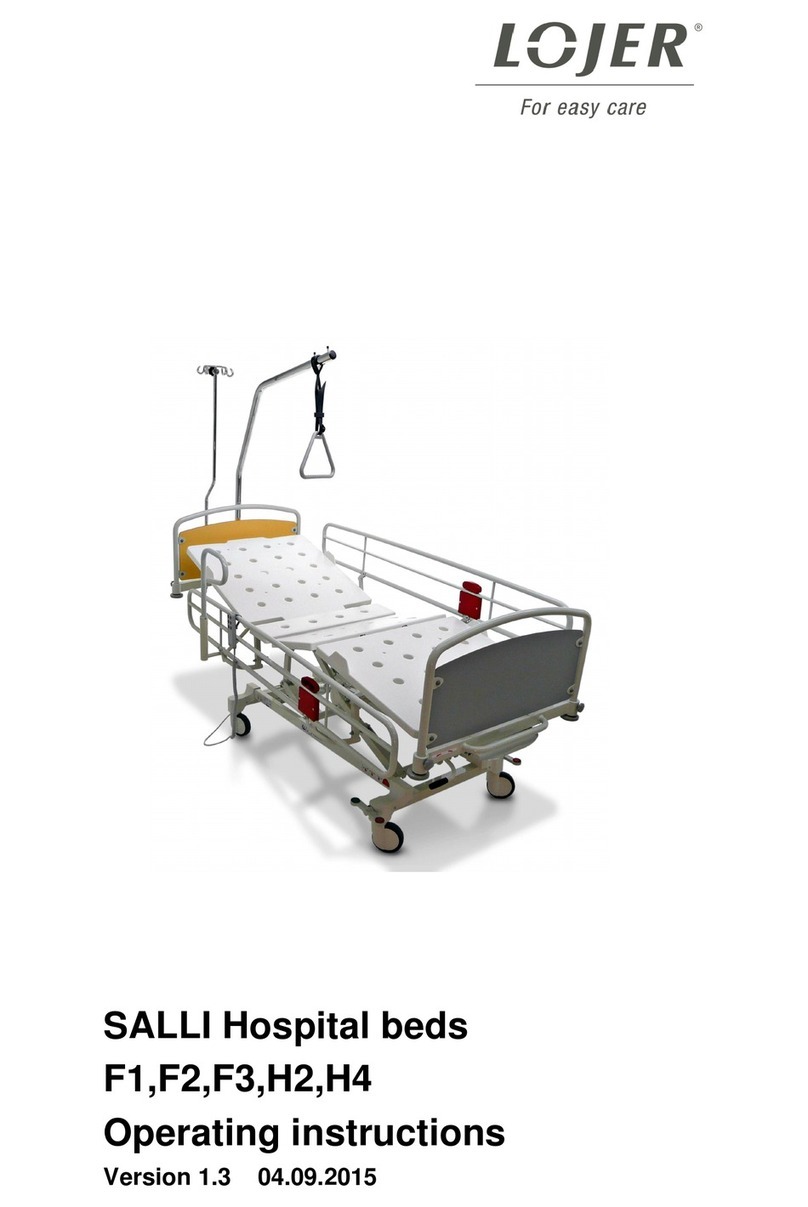
Copyright © Lojer Oy, 2012
08/2012 Rev. 1.0
Contents
1Lojer Capre-series examination tables................................................................................................................1
1.1 Description of parts ....................................................................................................................................... 1
1.2 Options and accessories ................................................................................................................................ 3
1.3 Symbols used on the device .......................................................................................................................... 3
2Introduction .......................................................................................................................................................4
2.1 Inspection upon delivery ............................................................................................................................... 4
2.2 Before use...................................................................................................................................................... 4
3Using the examination table ..............................................................................................................................5
3.1 Maximum inclination..................................................................................................................................... 5
3.2 Cental locking of the castors (optional)......................................................................................................... 5
3.3 Height adjustment ......................................................................................................................................... 6
3.4 Adjustment of the back rest .......................................................................................................................... 7
3.5 Adjustment of the heel support (Capre EG) .................................................................................................. 8
3.6 Using the bowl (Capre EG)............................................................................................................................. 8
3.7 Paper roll holder (accessory) ......................................................................................................................... 8
3.8 Leg support (accessory) (Capre EG) ............................................................................................................... 9
3.9 IV-pole (option).............................................................................................................................................. 9
4Cleaning and disinfecting .................................................................................................................................10
4.1 Metal and plastic surfaces ........................................................................................................................... 10
5Maintenance ....................................................................................................................................................12
5.1 Biannual measures ...................................................................................................................................... 12
5.2 Annual measures ......................................................................................................................................... 12
5.3 Troubleshooting .......................................................................................................................................... 13
5.4 Preventive maintenance.............................................................................................................................. 14
6Technical information ......................................................................................................................................15
6.1 Circuit diagram ............................................................................................................................................ 16
6.2 Standards..................................................................................................................................................... 17
7Recycling ..........................................................................................................................................................17
8Contact information .........................................................................................................................................18
To avoid injury, follow the instructions given in this document.







